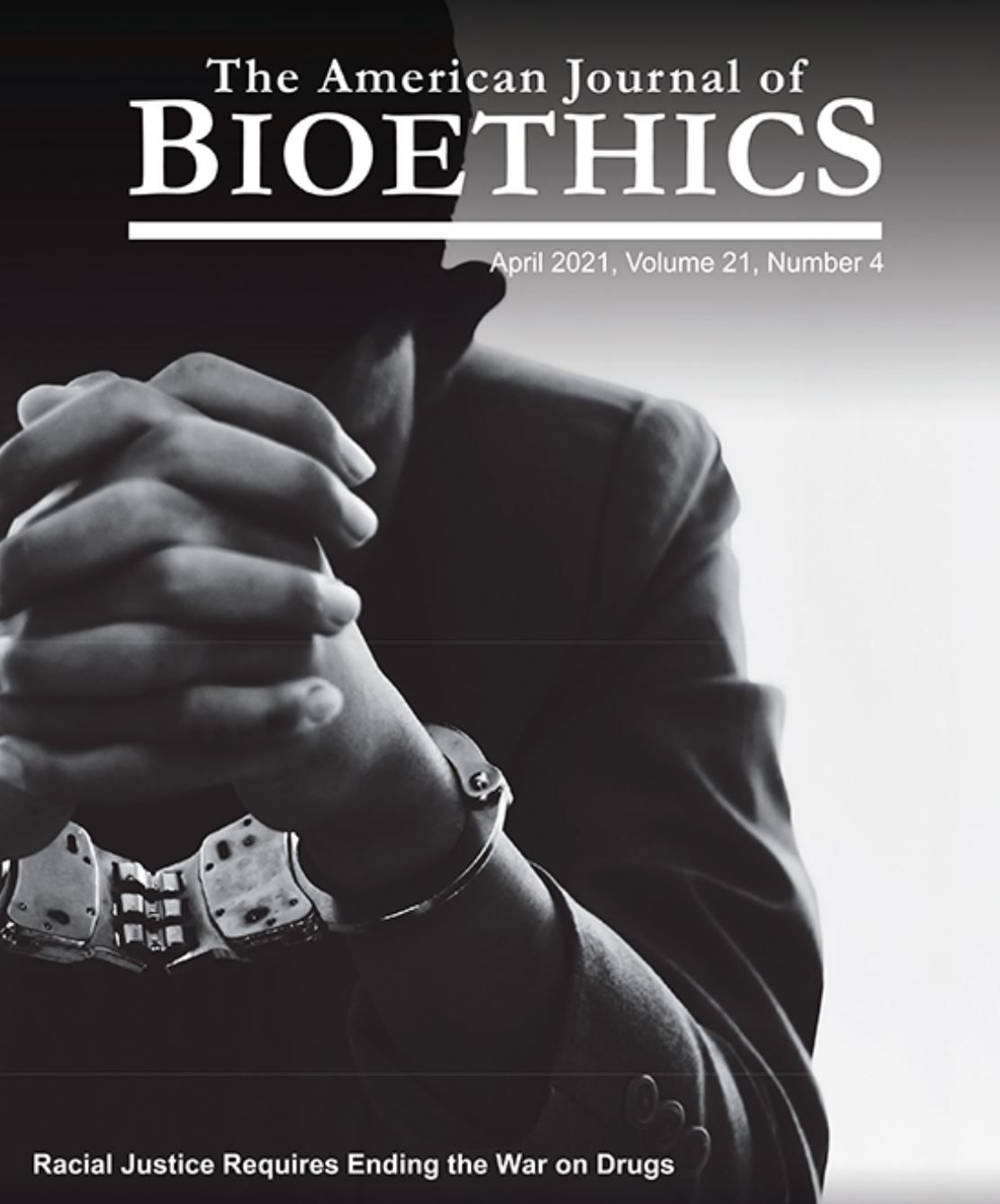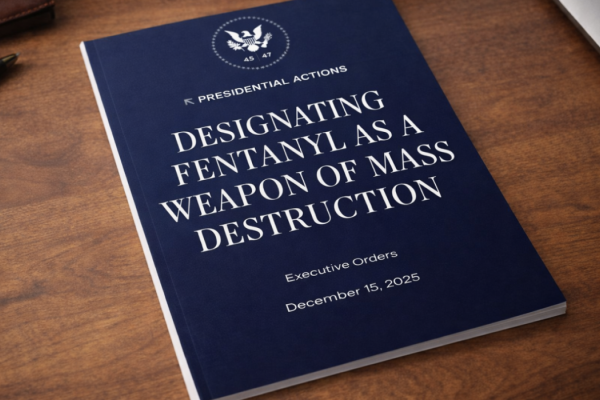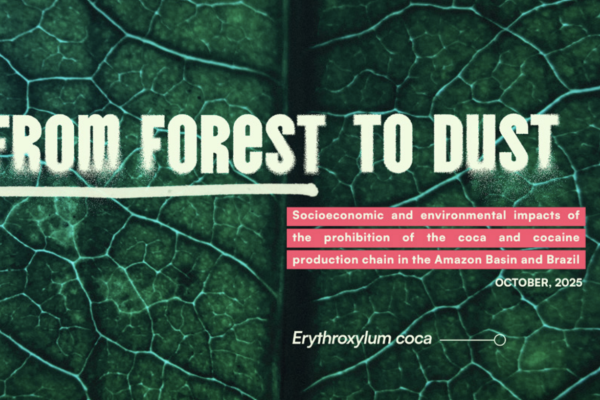9th April 2021
Some contributions on how to formulate drug policies and provide evidence-based regulation
This is a pre-proof draft of an Invited commentary for the American Journal of Bioethics by Steve Rolles (Transform), Prof David Nutt, and Dr Anne Schlag (Drugscience). (the commentary is on 'Racial justice requires ending the war on drugs'- : By Brian Earp, Carl Hart et al 2020).
The published version of this commentary is available here and number of other commentaries on Earp et al 2020 are also published in the Journal here

Earp et al make a comprehensive and compelling argument for ending the “war on drugs”’, highlighting the importance of both ending the criminalisation of people who use drugs, and exploring options for legally regulated market alternatives to existing prohibitions on drug supply and availability. Where there is now a growing consensus that the prohibitionists’ status quo is failing and there is an urgent need for reform there is, however, less agreement on what shape such reforms should take, either within the US, or in the wider international debate.
This is unsurprising given the wide array of different drugs, drug using populations, and risk behaviours, as well as the often profound differences in the political and cultural contexts in which illegal drug use and drug markets exist, and the various drug policy and law reform processes that are unfolding. Despite this sometimes bewildering complexity - and its lesson to be cautious with over-generalisations- it is welcome to see how groups of experts and professionals from different disciplines are uniting in agreement; that the debate has decisively shifted from if reform is needed, to how it should happen, and the task mapping out its precise contours and planning its implementation. As Earp et al allude, when it comes to translating broad policy principles into real world policy making, context is all important, and as the familiar saying goes; the devil is very much in the detail.
The authors of this commentary were recently involved in a Multi Criteria Decision Analysis (MCDA) with relevance to this discussion. This MCDA sought to explore the impacts of four different approaches to drug market regulation (absolute prohibition, prohibition with decriminalisation of possession/use, legally regulated markets under strict state control, and legal commercial ‘free’ markets) for three different drugs (alcohol, cannabis and heroin) (for details, please see Rogeberg et al 2018, and Rolles et al Under Review). The approach involved convening a diverse group of experts on drug harms, addiction, criminology and drug policy to first identify a comprehensive taxonomy of ethical concerns familiar from broader drug policy debates. 27 policy criteria were identified covering social, health, criminal, political, public and economic policy impacts. The group then evaluated the four regimes on the 27 criteria for alcohol, cannabis and heroin separately. Crucially the different policy impact criteria were weighted to reflect their relative importance in the final analysis, and the impacts included not just costs but also potential benefits of both drug use and drug markets across the different criteria.
This MCDA highlighted not only the multifaceted nature of drug policy impacts across a broad spectrum of issue areas, but also the reality that different stakeholders will naturally prioritise different outcomes, and that there are often tensions and trade offs between them. Industry may wish to maximise sales and profits, the treasury to maximise tax revenue, public health interests to restrict availability of certain drugs to reduce health harms, police to reduce the scale of the illegal market, and so on. Tobacco taxes are a useful contemporary illustration of such trade-offs; as public health advocates have often successfully advocated for rising taxes to dissuade use and reduce the burden of smoking related illness, so criminal tobacco smuggling and counterfeiting has been incentivised, increasing criminal justice costs.
Illustrating such challenges on the international scale, it is useful to contrast the differing policy priorities of countries such as Mexico and Colombia - whose concerns are dominated by organised crime and security issues related to illegal production and transit of drugs - with the concerns of the US, Canada and Europe, focused much more on the public health impacts of drug use. Illegal drug markets and UN international drug control frameworks traverse national boundaries, highlighting the risks of too parochial a focus on domestic policies, particularly in major drug consumer jurisdictions, that have significant implications for sustainable development and human rights elsewhere in the world - too often marginalised in the mainstream debate (Count the Costs Initiative 2016; IDPC 2019). Structural inequalities relating to race, gender, and income, that have been exacerbated by domestic prohibitions are also echoed on a global scale in the inequalities between the dominant consumer markets of the Global North and producer and transit regions of the Global South.
Clearly there are many such ethical dilemmas, trade offs and compromises to be negotiated in both domestic and international drug policy design. While such discussions can be informed by evidence, scientists, to quote Thomas Barbor, “have no more standing than anyone else in a society to say which specific outcomes a society should care about the most, or whether such outcomes are bad, good, or indifferent” (Babor 2010). These value-laden questions can ultimately only be resolved, as Earp et al note, ‘within the domain of democratic politics’. However, in this context, the policy design process is clearly important; disproportionate influence of one stakeholder group may distort policy in their interests, at the expense of others. Meaningful participation in policy design from a broad array of relevant expertise and lived experience from impacted communities (including, but not limited to, people who use drugs) reflecting all policy impact criteria is vital. MCDA, a process ‘designed to help groups pool knowledge, deconstruct complex issues into simpler judgments, and reconstruct overall judgments in a way that promotes consistency, full consideration of all concerns and alternatives, and a rigorous treatment of trade-offs’ (Rogeberg et al 2018) may be a useful tool for reconciling diverse stakeholder viewpoints as the drug policy reform debate progresses. Evidence must, of course, inform and guide decision making, and it is therefore vital that historic shortcomings in drug policy impact monitoring are addressed to ensure meaningful evaluation based on agreed performance indicators reflecting democratically agreed policy goals.
The MCDA process found the strict state control model of legal regulation to be the cumulative preference across all three drugs considered. The same broad conclusions were reached by a similar MCDA recently undertaken in the Netherlands considering different policy models for MDMA (ecstasy) (Van Amsterdam et al 2021). While the state control model outscored the free market model for all drugs overall, this was not the case for all criteria; free markets, for example, scored better on reducing the scale of the illegal trade. Absolute prohibition scored worst for all drugs, albeit with some harms mitigated by decriminalisation. The analysis also highlighted how different the outcomes of alternative post-legalisation market models can be. There is a risk that the pendulum may swing too far towards over-commercialised and under regulated markets widely seen with alcohol and tobacco - in which profit seeking is prioritised over public health, and corporate capture and market monopolisation shape regulatory structures in ways not conducive to the public good. Drugs are not ordinary commodities; while their differing risk profiles will warrant different degrees and forms of government regulation, these will in almost all cases be over and above those of more conventional products.
Such concerns are reflected in the substantive and growing body of analysis on post prohibition regulation models that has emerged in recent years from academia, civil society and government. Much of this work has focused on cannabis regulation, where the debate has moved from speculative debate to real world implementation of legalisation and regulation in multiple jurisdictions. Cannabis now offers something approaching a controlled experiment as different policy models - from the more commercialised US models, to the state controlled pharmacy sales in Uruguay, and informal non profit cooperatives in Spain - are playing out in real time, providing valuable lessons to inform ongoing public debate in other reform-minded jurisdictions. Importantly, policy discourse is also moving beyond regulation of cannabis, with more detailed proposals emerging for regulation of all drugs (Rolles 2009; GCDP 2018), as well as drug specific focus on psychedelics (Haden, Emerson and Tupper 2016) and stimulants (Rolles, Slade and Nicholls 2020), and some, albeit limited, examples of real world policy development for other drugs. These have included the legalisation and regulation of coca leaf in Bolivia (Farthing and Ledebur 2015); a bill to regulate coca and cocaine powder currently being debated in the Colombian Congress (Congreso de la República de Colombia 2020), an Act providing a regulatory framework for novel psychoactive substances in New Zealand (NZ Ministry of Health 2013), legal access to psychedelic plants in Oregon, USA (City of Portland 2020) and the establishment of a more formalised ‘safe supply’ prescribing model in Canada that incorporates a range of opioids, stimulants and benzodiazepines (Government of Canada 2021).
The paradigm shift now occurring in drug policy, away from failed punitive prohibitionist thinking and towards more pragmatic and evidence based public health approaches, continues to accelerate. In any future regulation model, social justice and equity measures need to be hardwired into legislative development from the outset - to not only ensure that the inequities of prohibition are not reproduced in different forms within legal markets, but also to include a reparative element to provide redress for the historic harms of the enforcement of the “war on drugs”. The ongoing engagement of expert voices - including of people who use drugs and the communities disproportionately impacted by the consequences of drug policies - is essential in this context. Policy makers, civil society and academia have an opportunity, and indeed a responsibility to ensure this occurs.
References
Babor, T. 2010. Drug policy and the public good. Oxford: Oxford University Press.
City of Portland 2020. City of Portland Charter Amendment Decriminalization of Natural Psychedelics. https://www.portlandoregon.gov/auditor/article/745468 (Accessed February 11th 2021)
Congreso de la República de Colombia. 2020. Proyecto de Ley ‘Por medio del cual establece el marco regulatorio de la hoja de coca y sus derivados y se dictan otras disposiciones’. http://leyes.senado.gov.co/proyectos/images/documentos/Textos%20Radicados/proyectos2de%20ley/2020%20-%202021/PL%20236-20%20Coca%20y%20Derivados.pdf (Accessed February 11th 2021)
Count the Costs Initiative. 2016. The Alternative World Drug Report. London, UK: Transform Drug Policy Foundation. https://transformdrugs.org/publications/the-alternative-world-drug-report-2nd-editionm (Accessed February 11th 2021)
IDPC. 2019. Taking stock: A decade of drug policy - A civil society shadow report. http://fileserver.idpc.net/library/Shadow_Report_FINAL_ENGLISH.pdf (Accessed February 11th 2021)
Farthing, L. and Ledebur, K. 2015. Habeas Coca Bolivia’s Community Coca Control. www.opensocietyfoundations.org/publications/habeas-coca-bolivia-s-community-coca-control (Accessed February 11th 2021)
Global Commission on Drugs. 2018. Regulation: The Responsible Control of Drugs. https://www.globalcommissionondrugs.org/reports/regulation-the-responsible-control-of-drugs (Accessed February 11th 2021)
Government of Canada. 2021. Government of Canada supports four safer drug supply projects in British Columbia. https://www.canada.ca/en/health-canada/news/2021/02/government-of-canada-supports-four-safer-drug-supply-projects-in-british-columbia.html (Accessed February 11th 2021)
Haden, M., Emerson, B., and Tupper, K. (2016) A Public-Health-Based Vision for the Management and Regulation of Psychedelics. Journal of Psychoactive Drugs 48(4): 243–252. http://dx.doi.org/10.1080/02791072.2016.1202459
NZ Ministry of Health. 2013. The Psychoactive Substances Act 2013.
https://www.health.govt.nz/our-work/regulation-health-and-disability-system/psychoactive-substances-regulation/psychoactive-substances-act-2013 (Accessed February 11th 2021)
Rogeberg, O., Bergsvik, D., Phillips, L.D. et al. 2018. A new approach to formulating and appraising drug policy: A multi-criterion decision analysis applied to alcohol and cannabis regulation. International Journal of Drug Policy 56: 144-152, https://doi.org/10.1016/j.drugpo.2018.01.019.
Rolles, S. 2009. After the War on Drugs: Blueprint for Regulation. London, UK: Transform Drug Policy Foundation. https://transformdrugs.org/pub...
Rolles, S., Schlag A.K., Measham, F. et al . A Multi Criteria Decision Analysis (MCDA) for evaluating and appraising government policy responses to non-medical heroin use. https://www.sciencedirect.com/...
Rolles, S., Slade, H., and Nichols, J. (2020) How to regulate Stimulants: A practical guide. London, UK: Transform Drug Policy Foundation. https://transformdrugs.org/assets/files/PDFs/how-to-regulate-stimulants-full-text-hires-2020.pdf (Accessed February 11th 2021)
Van Amsterdam, J., Peters, G.-J.Y., Pennings, E., et al. 2021. Developing a new national MDMA policy: Results of a multi-decision multi-criterion decision analysis. Journal of Psychopharmacology. Online First February 2021. doi:10.1177/0269881120981380




